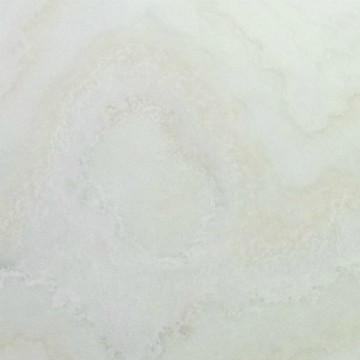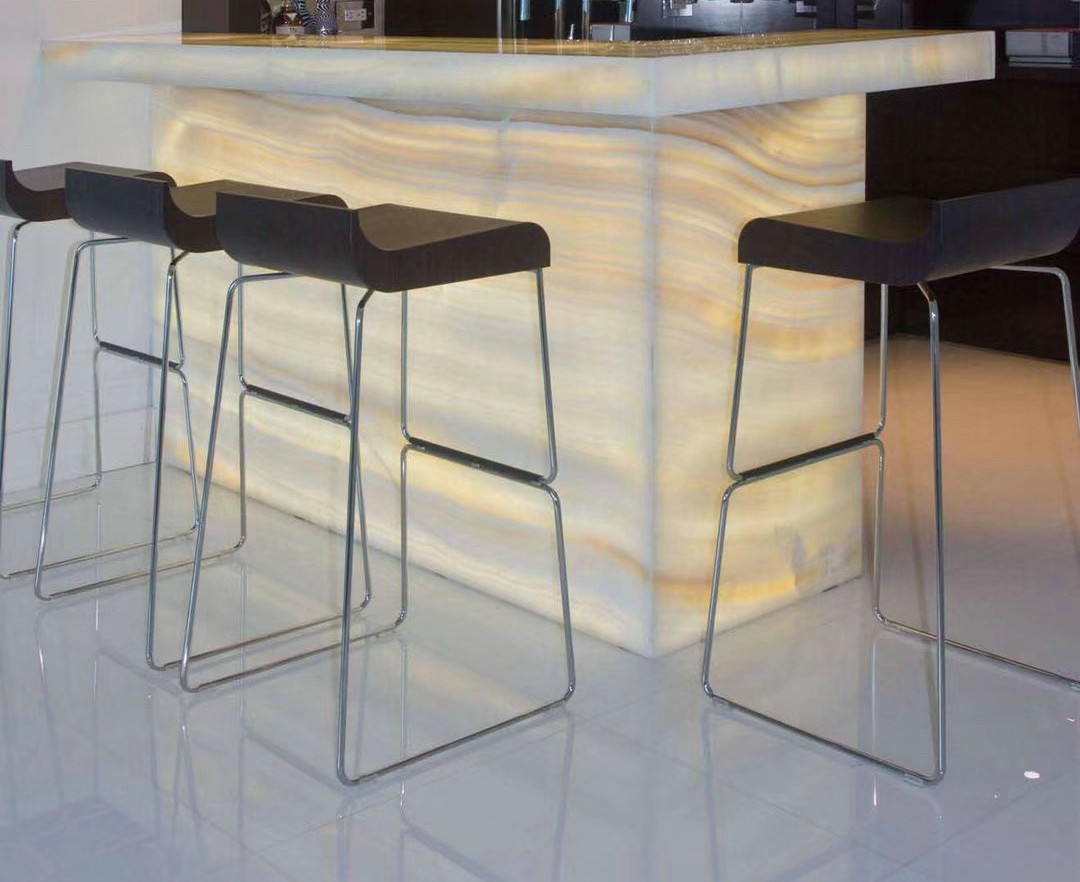White Onyx Stone

White Onyx Stone (sometimes referred to as white onyx marble) is a stunning natural material which is quarried in Iran. White onyx has an ice-white background with some veining. This veining can be gold, grey and occasionally red. Out of all the different varieties white onyx has the most global demand. This in turn makes it the most expensive onyx on the market.
A large amount of white Onyx is quarried in north west of Iran. In this region, there is an abundance of thermal springs1 which have left large travertine and onyx deposits. Between the city of Tabriz2 and Lake Urmia these springs have deposited a large quantity of travertine one being 'Persian Red Travertine'.
Geologically onyx is a compact banded travertine composed of very fine-grained calcite3. Which is the reason you will find the presence of white onyx as well as other varieties of onyx and travertine.
The reason for the purity of the white onyx is the material hasn’t endured much oxidation which is normally caused by ground water and has very little in the way of impurities.
It is important to note all onyx slabs will have naturally occurring cracks and fissures across the surface. This is nothing to worry about and is a natural characteristic of onyx. Onyx is not durable in comparison to other natural stones such as marble, granite and travertine. For this reason, we recommend you do not use onyx in areas which will sustain heavy foot traffic.
Onyx can be either vein-cut or cross-cut. Cross cut is where you cut across the vein of the stone (horizontally across the block) and vein-cut is where you cut with the flow of the stone's vein (vertically down the block). With cross-cut the patterning is more circular and vein-cut the patterning is more linear. With white onyx due to the purity of the stone the difference between the two styles of cutting is negligible.
Below you can see a white onyx slab which has been cut using the vein-cut method.

A material as beautiful and valuable as white onyx is best deployed as a feature piece.
This can be achieved in several ways. Let’s look at ways this can be done in commercial settings. One such way is with the use of back-lighting an onyx slab. Other methods include lighting a bespoke onyx fabrication such as a bar (shown below) or using white onyx tiles for wall cladding to create a stunning feature-wall.
In a residential context, white onyx can be used to the same effect creating feature walls in bedrooms and bathrooms. Another area in which onyx can be used as to make a statement is by using it for form an onyx dining table or stone coffee table. Here you can make use of chandelier lighting to put the spotlight on this enchanting material.
One thing is certain when you use luxurious white onyx. Wherever you use it, it will deservedly take centre stage.

Products in this Material